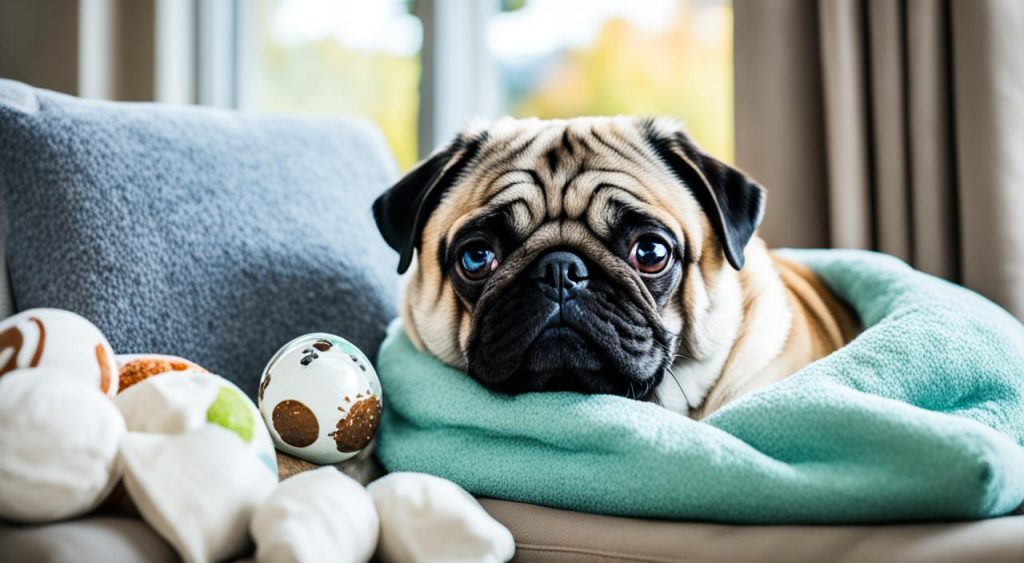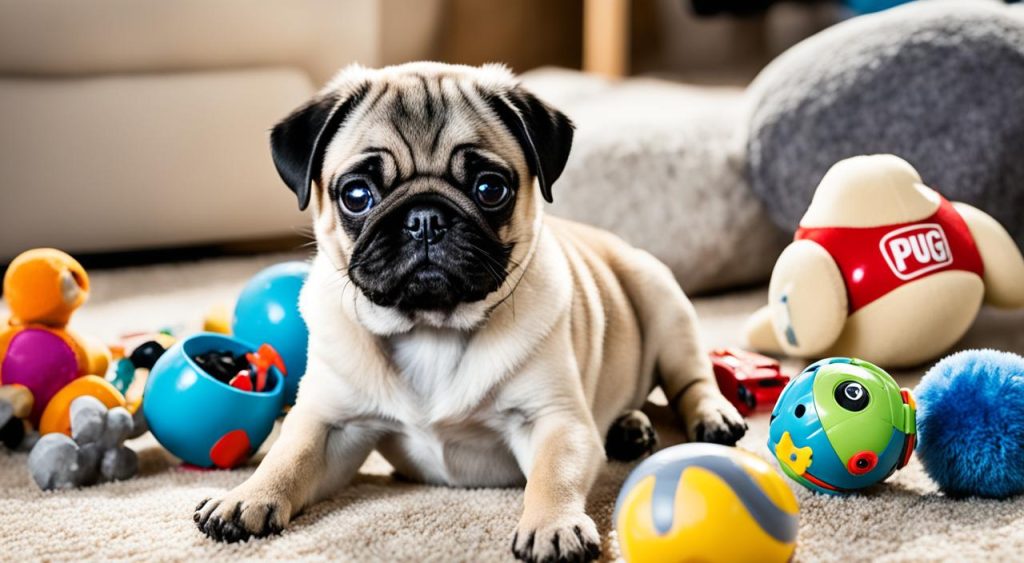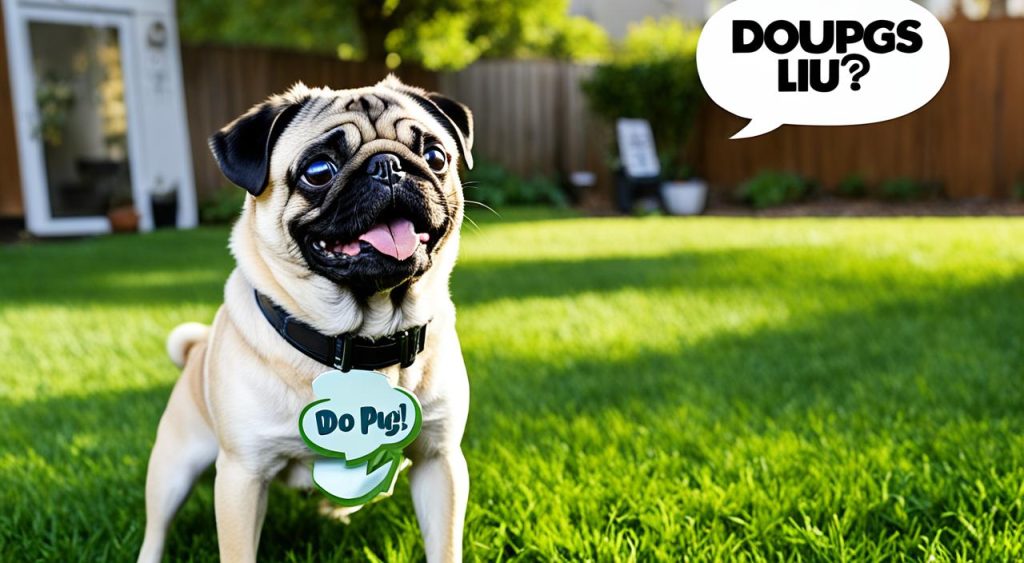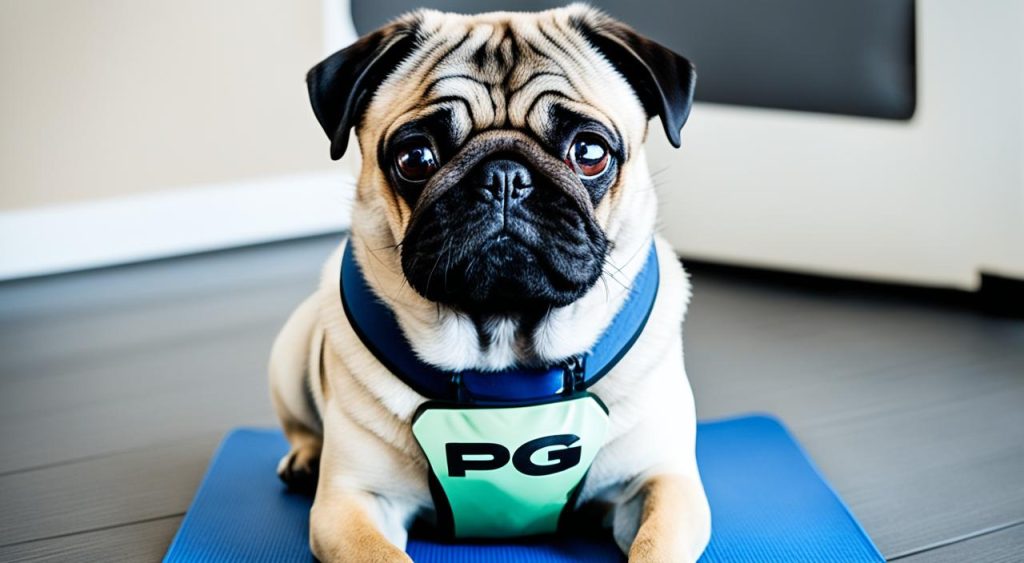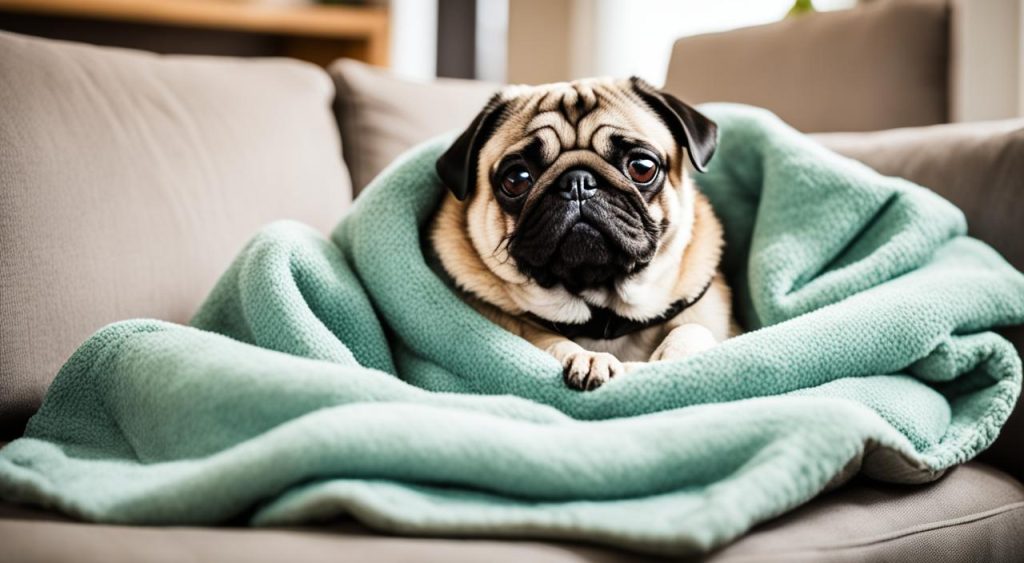Pugs, with their adorable and comical appearance, often get labeled as lazy dogs. However, the truth about their behavior might surprise you. While Pugs may not match the energy levels of some other breeds, they are far from being completely lazy.
It’s true that Pugs enjoy their sleep and can snooze for up to 14 hours a day. But when they’re awake, they can be quite active and playful. A natural curiosity drives them to explore their surroundings, and they thrive on being close to their humans. Pugs are known for their loyalty and can be both affectionate and adventurous. So, although they may have a laid-back attitude, they’re far from being couch potatoes.
Key Takeaways:
- Pugs are not as lazy as people think, and their behavior varies from individual to individual.
- While they may sleep a lot, Pugs can be active and playful when awake.
- Pugs have a natural curiosity and love being close to their owners.
- Pugs are known for their loyalty, affection, and adventurous nature.
- Despite their laid-back attitude, Pugs are far from being completely lazy dogs.
The Ancient Origins of Pugs and their Unique Characteristics
Pugs, as an ancient breed, have a rich and fascinating history that dates back to before 400 B.C. These charming dogs have their origins in China and were initially bred to be companions to Chinese Emperors. They were highly treasured by the royal court and held a special place in Chinese culture.
One of the most distinctive features of the Pug breed is their wrinkled face, which holds significance in ancient Chinese beliefs. The Chinese believed that the wrinkles on a Pug’s face could reveal special characters or symbols, further adding to their mystique.
Pugs are often described as having a lot of dog in a small space. Despite their small stature, they possess a sturdy body and a playful personality. Their compact and muscular build enables them to be agile and active, despite their diminutive size.
The name “Pug” evolved from the term “mopshond,” which was used to refer to marmosets due to the similarities in their facial expressions. This unique name is a testament to the distinctive appearance of this ancient breed.
Did you know that Pugs were favored by royalty throughout history? Famous figures such as Napoleon Bonaparte and Marie Antoinette were known to be devoted Pug owners, contributing to the breed’s illustrious reputation.
Pugs have truly stood the test of time and continue to captivate hearts around the world with their endearing personality, adorable wrinkles, and rich history.
Pug Activity Level and Exercise Needs
Pugs are often associated with being lazy, but they are not entirely sedentary creatures. While they do enjoy their beauty sleep and can sleep for a significant portion of the day, they still possess a natural curiosity and a desire to explore their surroundings. Despite their small size and laid-back demeanor, Pugs have a surprising amount of energy and enjoy going for walks with their owners. They may not have the endurance of more active breeds, but they can still participate in various activities that suit their energy level.
Pugs are adaptable to different lifestyles and can easily adjust to their owner’s exercise routine. Whether you prefer short walks around the neighborhood or longer hikes in the great outdoors, your Pug will be happy to join you. They may not require intense exercise sessions, but regular physical activity is essential to keep them mentally stimulated and prevent obesity. Pugs have a tendency to gain weight, so it’s important to provide them with opportunities for light exercise and play to maintain a healthy weight.
While Pugs may not be the most athletic dogs, they make up for it with their affectionate nature and entertaining personality. So, whether you take them for short walks or engage in gentle play sessions, you can keep your Pug happy, healthy, and satisfied. Remember, a well-exercised Pug is a happy Pug!
Pug Grooming and Health Considerations
Proper grooming is essential to keep your Pug looking and feeling their best. Despite their short coat, Pugs are heavy shedders, so regular grooming is necessary to control their shedding and prevent fur from taking over your home. Regular brushing with a soft bristle brush will help remove loose hair and keep their coat healthy and shiny.
In addition to grooming, Pugs have unique health considerations that all owners should be aware of. One significant health concern for Pugs is their breathing. Due to their flat face and short nose, known as brachycephalic features, Pugs are prone to respiratory issues. This can lead to snoring and breathing difficulties, especially in hot weather or during physical exertion. It is important to monitor your Pug’s breathing and provide them with a cool and comfortable environment.
Pugs are also susceptible to eye injuries and dental problems. Their prominent eyes can be easily injured, so it’s crucial to keep their eyes clean and protected. Regular dental cleanings are necessary to prevent dental disease, which is common in Pugs. Lastly, Pugs are prone to other breed-specific disorders, such as skin fold dermatitis and obesity. Regular veterinary care, including dental cleanings and check-ups, is crucial to ensure your Pug’s overall health and well-being.
Conclusion
Pugs are often misunderstood as lazy dogs, but they possess much more than just a relaxed demeanor. While they may have a laid-back attitude, they are also capable of being active and playful. Pugs have a rich history dating back to ancient times in China, where they were treasured companions of Chinese emperors. Their unique characteristics, such as their wrinkled face and playful personality, make them a beloved breed among dog enthusiasts.
To provide the best care for your Pug, it’s important to be aware of their exercise needs, grooming requirements, and health considerations. Although they may not require as much exercise as some other breeds, regular activity is still necessary to keep them physically and mentally stimulated. Pugs are adaptable and can adjust to different lifestyles, making them ideal companions for various households.
Grooming is also an important aspect of Pug care. Although they have a short coat, they are heavy shedders, so regular grooming is necessary to manage their shedding and keep their coat healthy. Additionally, Pugs have some specific health considerations, primarily related to their breathing. As a brachycephalic breed, they can experience respiratory issues, particularly in hot weather or during physical exertion. Regular veterinary care is crucial to monitor their breathing, prevent dental problems, and maintain their overall health.
In conclusion, Pugs are not just lazy dogs, they are loyal, affectionate, and entertaining companions that bring joy to their owners’ lives. Understanding their unique characteristics, exercise needs, grooming requirements, and health considerations will help you provide the best care for your beloved Pug, ensuring a happy and fulfilling relationship for both of you.

